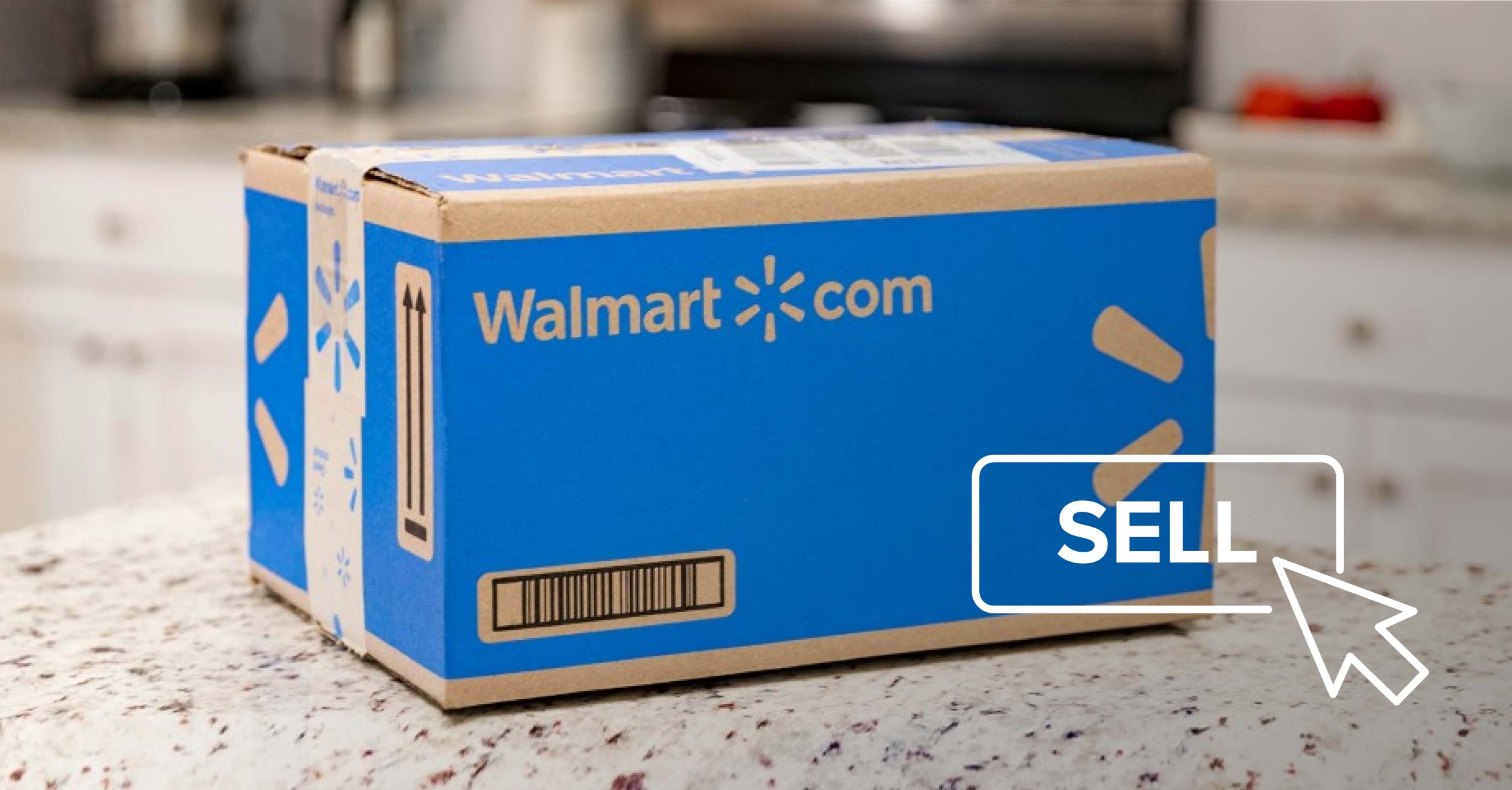
Walmart is a top 10 e-commerce company, so it’s no surprise that Walmart Marketplace—its platform for third-party sellers—carries a lot of weight. Walmart Marketplace launched in 2009, and now features more than 150,000 sellers.
Selling on Walmart Marketplace can provide a tremendous boost for a growing e-commerce company, but ensuring the setup and order fulfillment process is efficient is critical to success on the platform.
Why sell on Walmart Marketplace?
Selling on any marketplace vs ecommerce platform can increase a brand’s reach, and Walmart’s incredible name recognition and web traffic exposes a brand’s products to a large and new audience of potential Walmart customers.
Walmart Marketplace is a curated marketplace, meaning that the marketplace only accepts brands offering high-quality products, competitive prices, and top-notch customer service. This added layer gives Walmart buyers some reassurance that the products they’re purchasing and the brands they’re shopping from are high quality. But it also means less competition in the marketplace itself. For these reasons, if you’re just starting an ecommerce business, selling on Walmart might not be the best choice for you.
Unlike other marketplaces, sellers on the Walmart Marketplace only pay for what they sell. There’s a straightforward pricing structure with no setup or monthly Walmart seller fees. The referral fee varies per category but is usually around 15%.
One of the benefits of selling on marketplaces is access to cutting-edge e-commerce technology, and selling on Walmart is no different. The Walmart Marketplace offers a listing dashboard that helps sellers optimize their listings, as well as advertising options and shipping options that can increase the conversion rate of listings.
How to sell on Walmart Marketplace
There are plenty of reasons why brands would want to sell on Walmart’s Marketplace, but how does one get started?
Step 1: Apply for a Walmart Marketplace seller account
The application process consists of telling Walmart about the type of products a brand sells and some specifics about the business. Brands should have the following information on hand to complete the application:
- US Business Tax ID
- W9 or W8 and EIN Verification Letter from the Department of Treasury
- Product catalog integration plans (bulk upload, API, solution provider)
- Primary product categories, catalog size, and related information
- History of marketplace or e-commerce success
Make sure to review Walmart’s Prohibited Products Policy. If even just one of those items is on a brand’s product list, the application will get denied immediately.
The more detailed the information a brand can provide at this stage, the quicker Walmart will approve the application. Approval times vary depending on the business size and qualifications, but Walmart provides an application status tracker.
Can I sell on Walmart Marketplace as an individual?
The short answer is that no, Walmart does not allow individuals to sell on its platform. Businesses need to provide their business tax ID; the application will not accept a social security number.
Step 2: Register your business and set up your account
Once a brand is approved, it will need to complete the account registration process, which includes:
- Creating an account
- Accepting the Walmart Retailer Agreement
- Registering the company
- Filling out tax forms
- Setting up a payment processor account
- Selecting a shipping pricing model
Step 3: List your products
Next is an exciting step, which is listing all the products to be sold on Walmart Marketplace. There are several ways brands can choose to upload their product catalog. These include:
- CSV file bulk upload: Brands can create a CSV file using a spreadsheet that lists all of their products. The file needs to follow Walmart’s file upload guidelines. This simple option is good for sellers who are uploading a smaller catalog of products.
- API integration: This option works for brands that have a larger catalog and can connect via the Marketplace’s API to their e-commerce platform or an order management system.
- Integration partner: For brands using platforms like Shopify, WooCommerce, or BigCommerce, an integration partner can link their existing product catalog directly to Walmart’s Marketplace.
Because many sellers list similar products on the Walmart Marketplace, it’s important to understand Walmart’s product attributes so brands can distinguish their products from competitors. Attributes include details relating to the product itself, to the price, to the product description, and even to the shipping options offered for specific products.
Step 4: Conduct a test run before you officially go live
Testing the product catalog to check for issues before going live is critical to ensure a great customer experience for potential customers. If a brand has a small catalog, it can send the full catalog to test. If the catalog is larger, it’s best to send a portion of the catalog—generally the best-selling items—to test.
All the products that were added to the catalog will be listed under the Stage status, which means they aren’t live in the Walmart Marketplace but can be previewed to check for issues.
Brands can also set a few items to go live and then place test orders to test scenarios like order acknowledgment, order cancellation, and order refund in the Seller Center. It’s best to have a clear idea of the different experiences Walmart customers could have before going live.
Step 5: Launch your account and start selling!
Once a brand is happy with how the listings are displaying and how the account is functioning, they are ready to go live. Walmart does a final review process before releasing the account to go live. Once live, items are published to the marketplace and can be purchased within a few hours and searchable in 24-48 hours.
Walmart Marketplace seller best practices
Getting products live is a huge step, but brands also need to ensure that they’re following best practices to make the most out of selling on the Walmart Marketplace. The following are best practices for sellers on Walmart Marketplace that take advantage of all of the unique offerings of this top-notch marketplace.
Optimize your product listings
Walmart offers a unique way to measure the quality of a product listing and offers brands suggestions to improve the listing. The Walmart Marketplace’s Listing Quality uses an algorithm to generate a Listing Quality Score. This number ranges from 0-99 and exists for both individual products and a brand’s overall catalog.
The number consists of four factors:
- Content and discoverability
- Offer
- Ratings and reviews
- Post-purchase quality
Following the suggestions to optimize product listings will result in more product views and, ultimately, more sales.
Choose the right fulfillment options
More and more, customers are expecting fast shipping options, and that’s especially true when they’re shopping on large marketplaces like Amazon Prime and Walmart. Selling on the Walmart Marketplace allows brands to take advantage of the platform’s two-day and three-day shipping promises.
Brands can select different shipping options for different products, and products with two-day shipping display a “free 2-day delivery” tag. Walmart has found that products that display that tag see a 50% conversion boost. However, if two-day shipping isn’t always possible, products with a three-day shipping promise see a 30% conversion boost.
Consider an integration partner
The Walmart Marketplace allows integration with partners that offer services for one or two specialty areas or partners that offer full service. It’s important that brands can set and maintain high customer expectations and using an integration partner to streamline and simplify operations is a great way to ensure a top-notch customer experience every single time.
Provide stellar customer service
Brands need to provide stellar customer service to stand out while selling on the Walmart Marketplace. Walmart sends out emails requesting customer reviews after every purchase, so that part is already taken care of. What brands need to focus on is providing top-notch customer service at every level—from accurate product listings to quickly resolving issues when they arrive.
Providing a high level of customer service will keep a seller’s account in good standing and allow them to collect positive reviews.
Use paid ads to feature your products
While optimizing product listings and offering great shipping options can help increase sales organically, Walmart also allows brands to purchase ads to ensure their products are seen by more customers. Walmart allows sellers to purchase display ads as well as search ads that appear when customers search for a specific product. Sellers only pay for the ads when a customer clicks on them—rather than paying every time the ad is displayed.
Integrate and fulfill your Walmart Marketplace business with Flowspace
Flowspace’s OmniFlow Visibility Suite offers brands real-time visibility into inventory, orders, and fulfillment activity across all channels—including Walmart Marketplace. The platform also provides access to the predictive insights and customer data needed to anticipate consumer and market demands to ensure that Walmart shoppers receive their purchases as quickly and efficiently as possible.
All brands need to do to get that process started is to explore shopping cart integrations for Walmart Marketplace with the Flowspace platform. With a nationwide network of 1000+ warehouses and fulfillment centers, Flowspace is the best choice you can make for your growing eCommerce business and all your Walmart Marketplace integration needs.
To find out how Flowspace’s OmniFlow Visibility Suite can help your brand optimize for selling on Walmart Marketplace and provide a stellar experience, get in touch.






